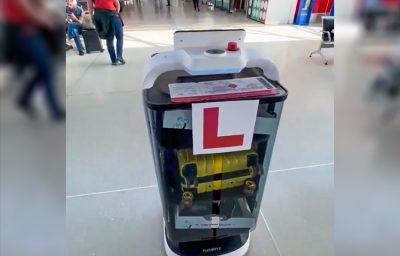
New University of the Sunshine Coast research has confirmed the positive impact of assistive technology allowing people with disabilities to access and use the beach.
While beach assistive technologies (BAT) such as beach wheelchairs and matting have been anecdotally well-received since their emergence, Dr Michele Verdonck says we’ve only scratched the surface in understanding the full scope of the impact.
“This research confirms some of the things we assumed. Namely that getting to the beach is valued and people with disabilities should be allowed to get onto the beach and participate in beach leisure just like everyone else does,” Dr Verdonck said.
“But it also connects people and affirms their identity.”
Several BAT users reported that it allowed them to enjoy being “a part of Australian culture” again and has given them access to “a normal life”.
Dr Verdonck said this is no small thing for a significant number of Australians with physical impairments or disabilities, who believed they would never touch the sand or feel waves again.
“Many of the research participants were surprised by the fact that they could actually go to the beach. They did not realise it was possible,” Dr Verdonck said.
“This has an important link to councils and surf lifesaving clubs, because very often it is through these publicly available beach wheelchairs and mats that people first get to realise a new reality – and get onto the beach like everyone else.”
Sunshine Coast Council has run an Accessible Beach Program at Mooloolaba and Coolum surf lifesaving clubs for several years and is continually seeking new ways to improve the program, including looking at options to expand the program to more locations.
Sunshine Coast Council Community Portfolio Councillor David Law said it was vital everyone was able to enjoy our beautiful beaches.
“We’re extremely proud to be able to promote inclusion, diversity and beach access for all on the Sunshine Coast,” Cr Law said.
The study also brought to light some significant hurdles still facing those with physical impairments from using the beach, including the bulky and often difficult nature of the equipment, reliance on scheduled times for access and the continued need for assistance from others.
Dr Verdonck believes the paper is the first qualitative study focused on BAT and said it’s already having a positive impact in the professional space.
“It’s already being circulated in occupational therapy and assistive technology fields and being used for supporting clinical decision making,” she said.
“One of our recent graduates contacted me to say she had read it and was using it already – which doesn’t often happen that quickly in research,” Dr Verdonck said.
Dr Michele Verdonck is on the voluntary of the board of directors of the Australian Rehabilitation and Assistive Technology Association.








